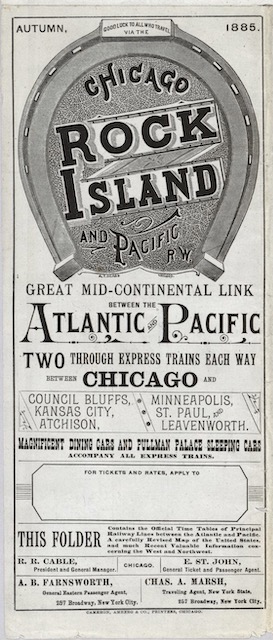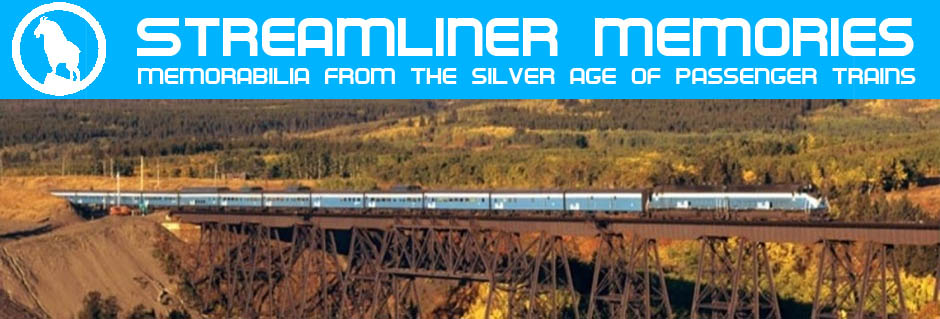Like the St. Paul, Burlington, and North Western, the Rock Island was a “granger railroad,” meaning it earned most of its money carrying grains and other farm products to mills and markets. But it was never situated quite as well as its competitors.
 Click image to download a 8.5-MB PDF of this timetable, which is from the David Rumsey map collection.
Click image to download a 8.5-MB PDF of this timetable, which is from the David Rumsey map collection.
This timetable shows that its route from Chicago to Omaha was 12 miles longer than the St. Paul’s. That didn’t add a significant amount of time to its trains, but it did add to the cost of operating them.
The Rock was at an even bigger disadvantage in the Chicago-Twin Cities corridor, which would grow to become the most competitive passenger rail market west of Buffalo. The St. Paul line was 410 miles from Chicago to St. Paul and 420 to Minneapolis. The Burlington and North Western would eventually be about the same, but the Rock Island route was 100 miles more to Minneapolis and 120 more to St. Paul.
Unlike the other three roads, which headed northwest through Wisconsin, the Rock Island first headed due west to a town called West Liberty in the center of Iawa, then turned north to Minneapolis via a town called Albert Lea, Minnesota.
The timetable attempts to make a virtue of this flaw, calling it “the famous Albert Lea route” and saying that “it traverses one of the most attractive, densely populated, and fruitful agricultural sections of the world.” But where the Milwaukee took as little as 17-1/4 hours to get to Minneapolis (and 16-1/2 to St. Paul), the Rock Island required 19-3/4 hours to Minneapolis and 20-2/3 hours to St. Paul.
Like the Burlington, Rock Island also had a line from Chicago to Kansas City. Where the Burlington’s was 488 miles long, Rock Island’s was 521. In the long run, neither were competitive with the Santa Fe, whose line was 454 miles. The Golden State route, with its handoff from Rock Island to Southern Pacific in Tucumcari, New Mexico, was not completed in 1885, but this timetable advertises the Rock Island’s connection with the Atlantic & Pacific Railroad (a Santa Fe predecessor) in Kansas City as a route to California.
